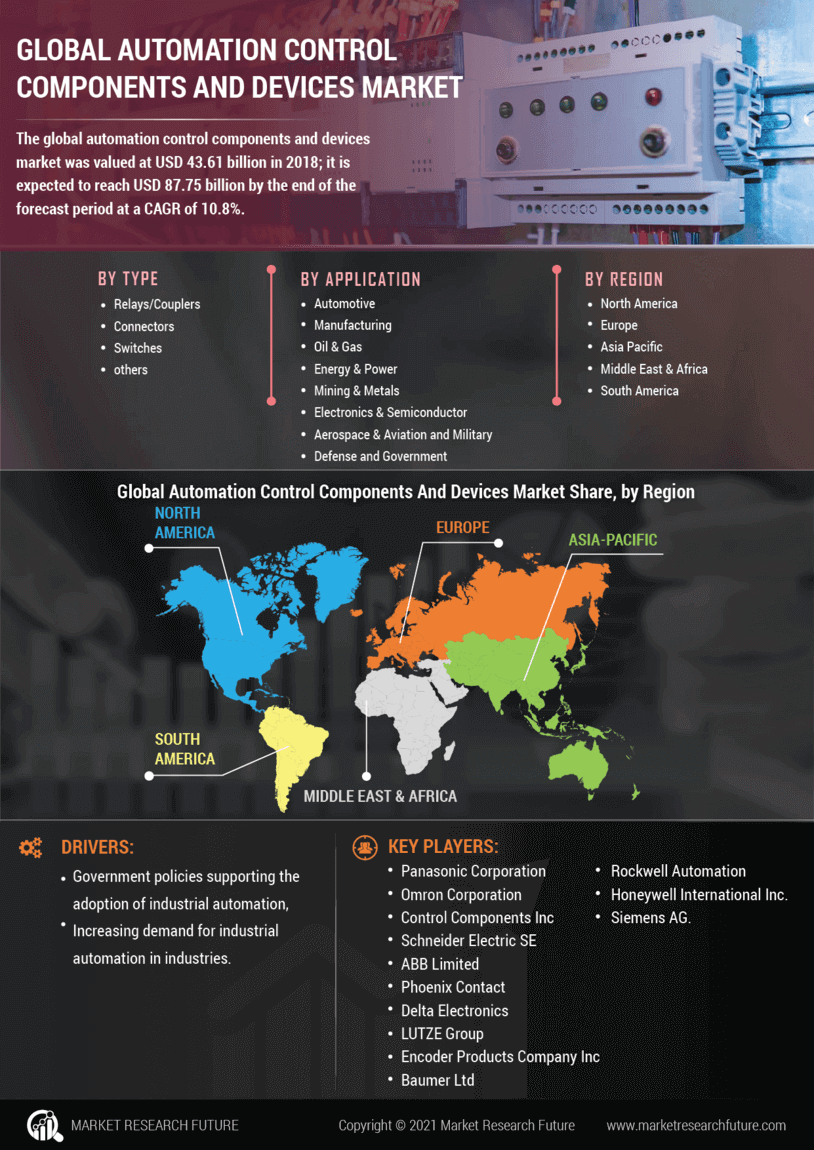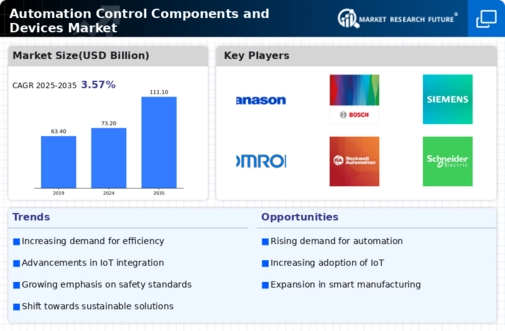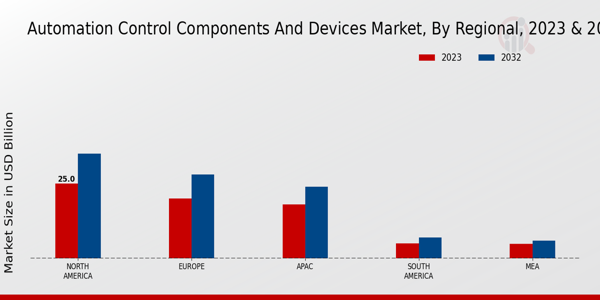Technological Advancements
The Global Automation Control Components and Devices Market Industry is experiencing rapid technological advancements, particularly in the fields of artificial intelligence and machine learning. These innovations enhance the efficiency and reliability of automation systems, enabling real-time data analysis and predictive maintenance. For instance, the integration of AI algorithms in control systems allows for improved decision-making processes, which can lead to reduced operational costs. As organizations increasingly adopt these technologies, the market is projected to reach 73.2 USD Billion in 2024, reflecting a growing demand for sophisticated automation solutions.
Increased Focus on Energy Efficiency
The Global Automation Control Components and Devices Market Industry is increasingly influenced by the global emphasis on energy efficiency and sustainability. Automation technologies enable organizations to optimize energy consumption, reduce waste, and lower carbon footprints. For example, smart grid technologies and automated energy management systems can lead to energy savings of up to 20 percent in industrial applications. As businesses strive to meet sustainability goals and comply with environmental regulations, the demand for energy-efficient automation solutions is likely to rise, further propelling market growth.
Government Initiatives and Regulations
Government initiatives aimed at promoting automation and digital transformation are playing a crucial role in the Global Automation Control Components and Devices Market Industry. Various countries are implementing policies that encourage the adoption of automation technologies to enhance competitiveness and economic growth. For instance, initiatives that provide financial incentives for companies investing in automation infrastructure can stimulate market growth. These regulatory frameworks not only support innovation but also ensure compliance with safety and environmental standards, thereby fostering a conducive environment for the automation sector.
Rising Demand for Industrial Automation
The Global Automation Control Components and Devices Market Industry is witnessing a surge in demand for industrial automation across various sectors, including manufacturing, oil and gas, and pharmaceuticals. This trend is driven by the need for increased productivity, reduced labor costs, and enhanced safety measures. For example, the implementation of automated systems in manufacturing plants has shown to increase production rates by up to 30 percent. As industries continue to embrace automation, the market is expected to grow significantly, with projections indicating a value of 111.1 USD Billion by 2035.
Integration of IoT in Automation Systems
The integration of Internet of Things (IoT) technologies into automation systems is transforming the Global Automation Control Components and Devices Market Industry. IoT-enabled devices facilitate seamless communication and data exchange between machines, leading to enhanced operational efficiency and predictive maintenance capabilities. For instance, IoT sensors can monitor equipment performance in real-time, allowing for timely interventions and minimizing downtime. This trend is expected to contribute to a compound annual growth rate (CAGR) of 3.86 percent from 2025 to 2035, as more organizations recognize the value of interconnected automation solutions.
























Leave a Comment